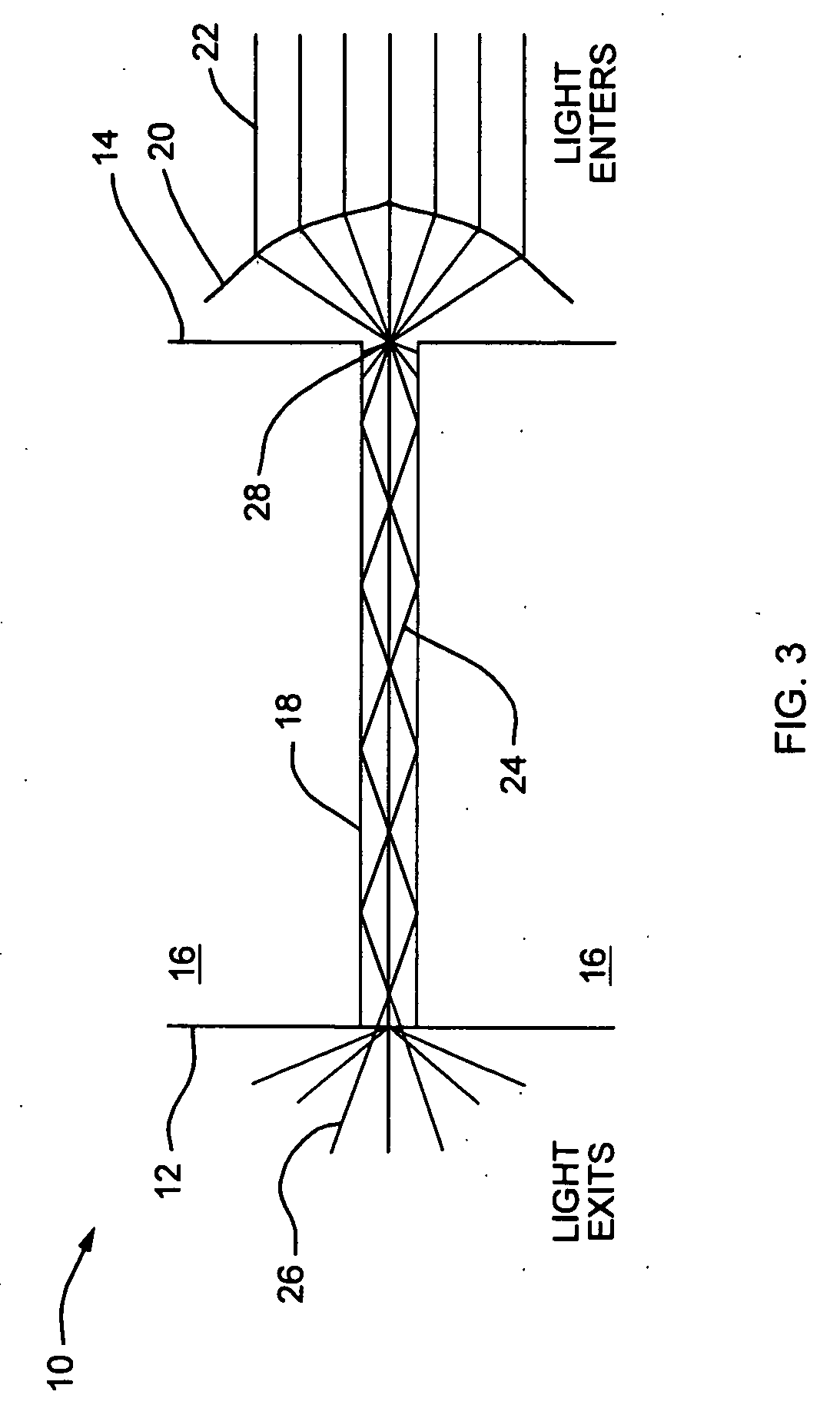Light transmitting building material and method for producing the same
a technology of building materials and light, applied in the field of building structures, can solve the problems of building heat loss tending to occur through windows, and building occupants not being able to see through opaque structural materials to the outside environmen
- Summary
- Abstract
- Description
- Claims
- Application Information
AI Technical Summary
Benefits of technology
Problems solved by technology
Method used
Image
Examples
Embodiment Construction
[0024] A building panel 10 of the present invention is shown in FIG. 1. The panel 10 includes a first surface 14 that will be referred to herein as an exterior-facing panel side 14 or simply exterior side 14. The panel 10 further includes a second surface 12 that will be referred to herein as an interior-facing panel side 12 or simply interior side 12. The panel is preferably fabricated with a uniform selectable thickness extending from the exterior side 14 to the interior side 12, although it is contemplated that the thickness may be varied if desired (as when the outside surface is made to resemble a house's siding). The panel 10 is effectively a three-dimensional structure having selectable dimensions establishing the area it covers. The coverage area may be rectangular, circular or other shape and the panel may be framed or not for installation. The interior side 12 and the exterior side 14 are referred to as such to provide proper orientation of the components of the panel 10 w...
PUM
| Property | Measurement | Unit |
|---|---|---|
| 90 degree angles | aaaaa | aaaaa |
| wavelength range | aaaaa | aaaaa |
| thickness | aaaaa | aaaaa |
Abstract
Description
Claims
Application Information
 Login to View More
Login to View More - R&D
- Intellectual Property
- Life Sciences
- Materials
- Tech Scout
- Unparalleled Data Quality
- Higher Quality Content
- 60% Fewer Hallucinations
Browse by: Latest US Patents, China's latest patents, Technical Efficacy Thesaurus, Application Domain, Technology Topic, Popular Technical Reports.
© 2025 PatSnap. All rights reserved.Legal|Privacy policy|Modern Slavery Act Transparency Statement|Sitemap|About US| Contact US: help@patsnap.com



